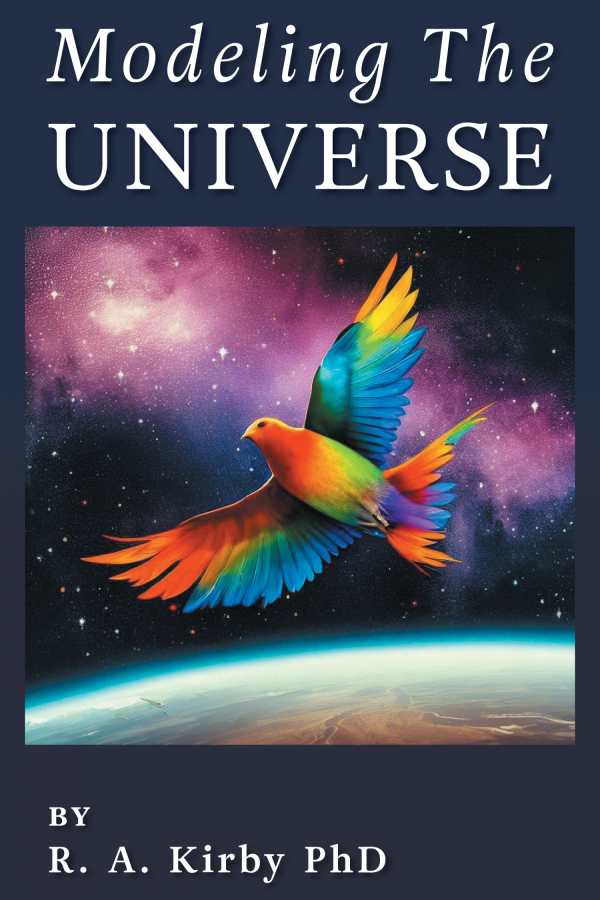Modeling the Universe
A concise but engaged work of scientific inquiry, Modeling the Universe reframes contemporary understandings of particle physics.
A self-proclaimed “modern Voyage of the Beagle,” R. A. Kirby’s mind-bending science book Modeling the Universe covers the constituent parts of the universe, starting with the smallest known particles and concluding with the Big Bang.
After a long look at the Standard Model of Particle Physics and its implications, the book proposes a theory of light as the source material of all matter. It applies this theory to otherwise unexplainable experimental results and relates it to all aspects of known physics laws.
The book is systematic in its approach, moving from examining the internal movements of the smallest subatomic particles toward covering their external energy and movement; it graduates to examining how groups of such particles move and interact with each other before addressing the bigger concepts of time, relativity, and gravity. It arrives at arguments regarding the universe as a whole, including topics like black holes and dark matter. Each chapter also follows an ordered pattern, with existing theorems examined and explained ahead of Kirby’s own light-based theory. The evidence for Kirby’s theory, and arguments regarding why it makes sense, are held for last.
This expansive work is done in a compressed space, though. Further, the entire book is summed up in the epilogue, which also makes arguments regarding why people should care about its theories of how the universe works. The result is a text that has the flavor of a jumping-off point for more extended conversations, opening up space to think about humanity’s place in the universe in line with its idea that all particles are composed of light.
For maximum accessibility, Kirby’s work involves the extensive use of analogies, as when an elastic band is used to illustrate how movement within a particle changes its shape and energy. An abundance of colorful diagrams and tables are present to illustrate ideas like the external and internal movements of particles, helping when it comes to visualizing the book’s more dense theoretical concepts. Still, foundational knowledge in general physics is presumed; little time is spent explaining the basis of the Standard Model or what a subatomic particle is, limiting the book’s usefulness for uninitiated lay readers. Further, the presence of typographical errors undermines the book’s credibility.
A concise but engaged work of scientific inquiry, Modeling the Universe reframes contemporary understandings of particle physics to introduce a theory of light as matter.
Reviewed by
Sarah Frideswide
Disclosure: This article is not an endorsement, but a review. The publisher of this book provided free copies of the book and paid a small fee to have their book reviewed by a professional reviewer. Foreword Reviews and Clarion Reviews make no guarantee that the publisher will receive a positive review. Foreword Magazine, Inc. is disclosing this in accordance with the Federal Trade Commission’s 16 CFR, Part 255.

